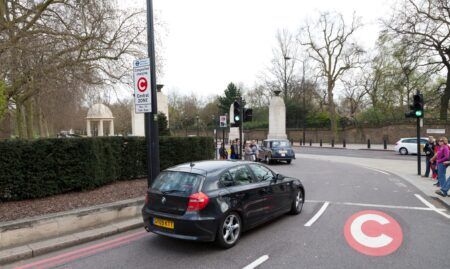The UK’s automotive services company the RAC has issued a statement setting out its support for technology which uses roadside cameras and artificial intelligence to identify dangerous drivers who use their hand-held phones at the wheel.
RAC road safety spokesman Rod Dennis has reacted to reports that some people consider the technology as some sort of breach of privacy and “big brother” by pointing out that it makes sense to use the solution to support the police in identifying people acting illegally.
Police forces across the country have been working with AECOM to trial the Acusensus solution, along with National Highways and the Department for Transport.
“Despite the penalties for using a handheld phone having doubled to six penalty points and a £200 fine seven years ago, it’s clear far too many drivers are still prepared to put lives at risk by engaging in this dangerous practice,” says Dennis. “We suspect a major reason for this is a lack of enforcement, meaning many drivers have no fear of being caught.”
The Acusensus solution uses roadside cameras to look into a vehicle to check if someone is using a hand-held phone, or not wearing a seatbelt. Once the potential offence has been flagged, a human checks the images to see if it should be passed on for further investigation.

“AI-equipped cameras that can automatically detect drivers breaking the law offer a chance for the tide to be turned,” Dennis adds. “The police can’t be everywhere all of the time, so it makes sense that forces look to the best available technology that can help them catch drivers acting illegally. What’s more, we know from RAC research that drivers are widely supportive of tougher enforcement of the law around handheld mobile phone use, with nearly half of these (47%) saying that camera technology like this is the best way of doing so.”
Acusensus was founded in Australia in 2018, and its UK operation led by enforcement expert Geoff Collins opened in 2022. “It is welcome that an organisation as trusted as the RAC is publicly supporting our technology, recognising that it is vital to use all tools possible to fight distracted driving, which is one of the ‘fatal five’ risk factors, most likely to lead to serious harm when driving,” says Collins. “We have a range of checks and balances to ensure innocent drivers’ privacy, and the RAC clearly recognises that any suggestion otherwise is simply wrong.”
Earlier in the year, the AA Charitable Trust supported the Acusensus solution, saying the new cameras, using AI, are proving successful in police trials so should be rolled out as soon as practical. The ‘Heads-Up’ solution can also spot when vehicle occupants are not wearing a seatbelt, which is another of the ‘fatal five’. According to the Parliamentary Advisory Council for Transport Safety, PACTS, 30 per cent of in-vehicle fatalities in the UK involve people not wearing a seatbelt.





